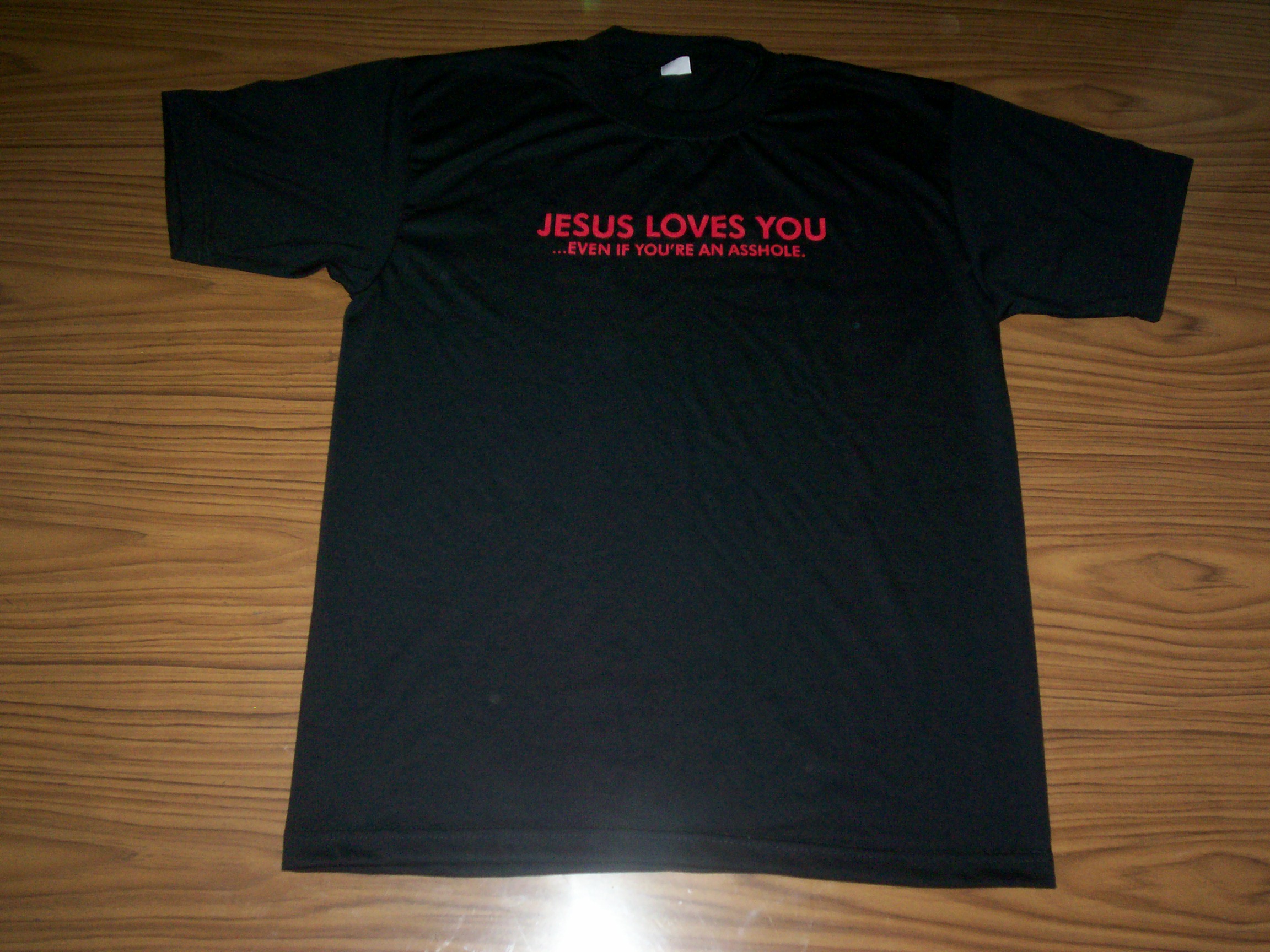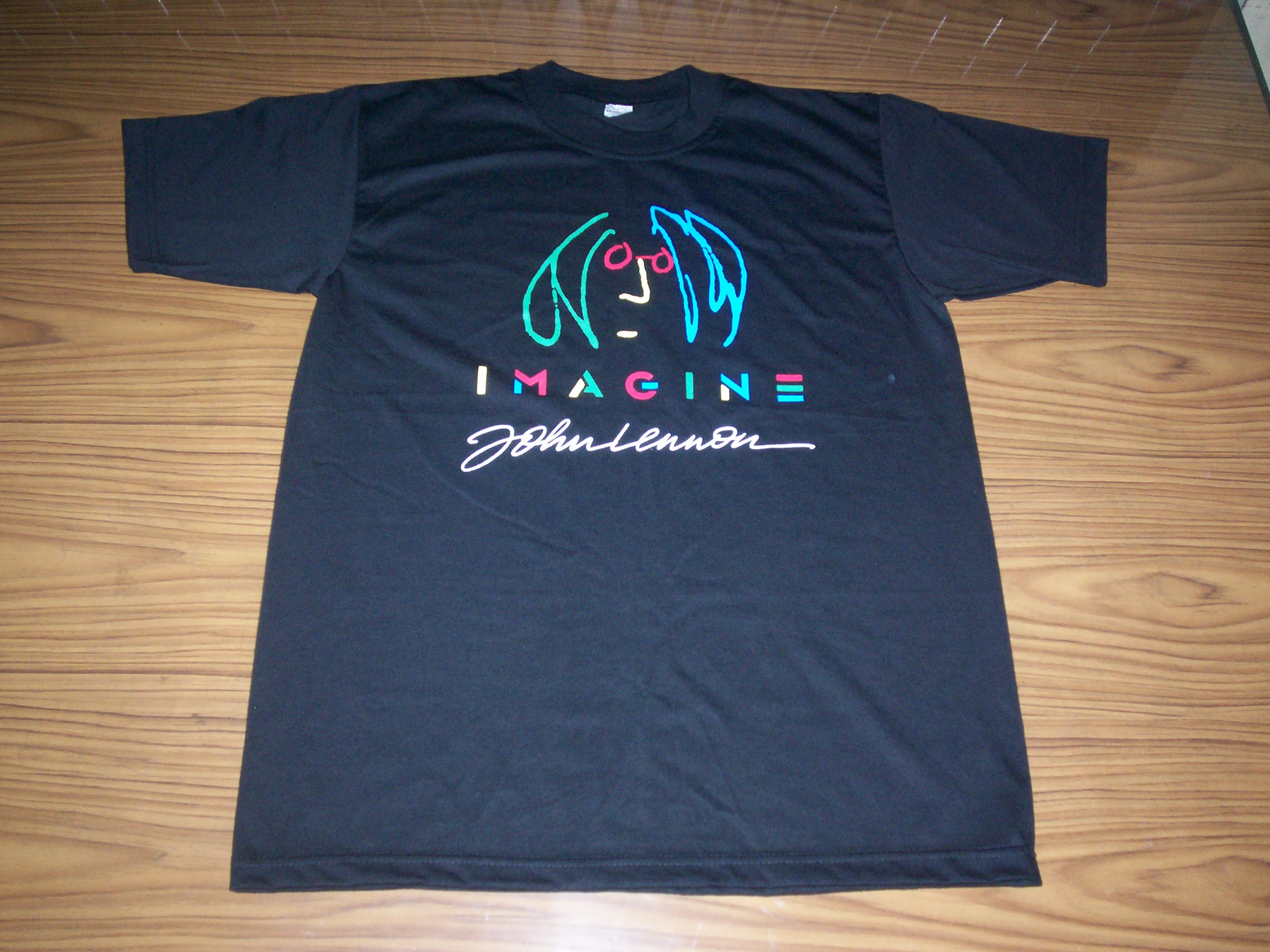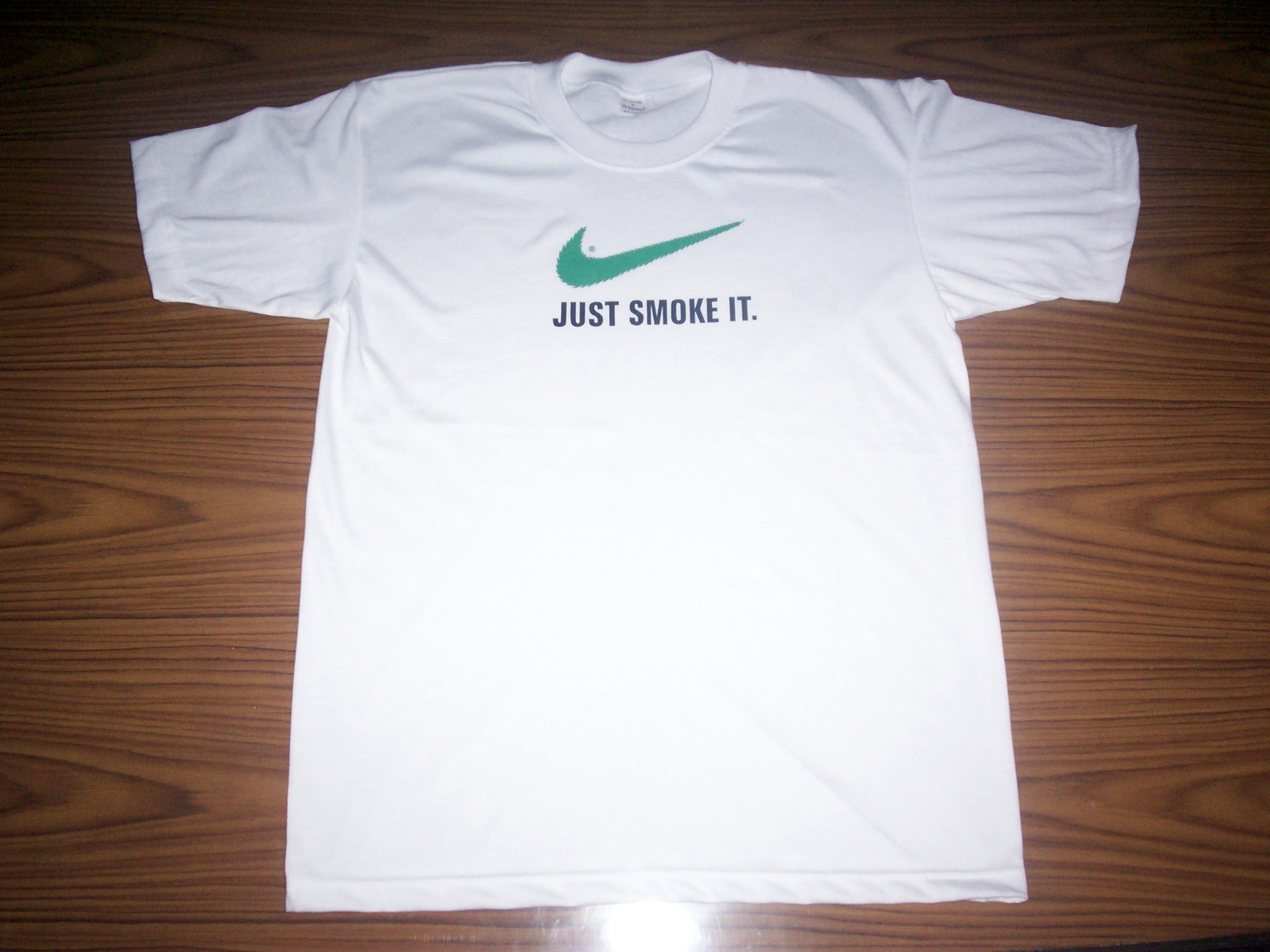It looks like you're using an Ad Blocker.
Please white-list or disable AboveTopSecret.com in your ad-blocking tool.
Thank you.
Some features of ATS will be disabled while you continue to use an ad-blocker.
10
share:
There is an exhibit in London at the Fashion and Textile Museum that runs from February 8 to May 6, 2018-
T-Shirt: Cult-Culture-Subversion:
Source
Crossing the Tees' History
We can save a lot of time if I just refer you to an infographic. According to the Oxford English Dictionary, the author F. Scott Fitzgerald was the first to use the word “T-shirt” in print; it appears in the novel “This Side of Paradise,” in a list of accouterments that a character carries with him to boarding school. Whether it was P.H. Hanes Knitting Company or the Cooper Underwear Company should take the credit for making the first t-shirt is a bit contentious and I'll leave that to the scholars.
Sources:
visual-arts-cork.com
artelino.com
Here's a couple of old favorite sites:
tshirthell.com
concepttshirts.co.uk
So what's your favorite shirt? Please share your silk-screened sentiments.
“The humble white t-shirt has come a long way since the days of Brando, Dean and Wayne. It has been controversial, sexy, political, ironic and just plain cool. Who knows where it’s going to go next?
– David Sinclair, Exhibition Curator
The T-Shirt has certainly been on a journey throughout the years, from its early guise as a man’s under garment, it has been re-imagined and redeveloped to the point whereby this often taken for granted item has played a role in many of the most significant cultural changes that have taken place.
However, rather than a biographical account of the history of everyone’s go-to garment for all occasions, the exhibition will navigate a timeline of selected milestones in the life of the T-shirt. Featuring more than 100 items spanning 50 years, the experience is laid out into twelve sections where we see its evolution from early production and design techniques, to today’s wearable tech. There’s also a look at the T as a canvas for art, its place within pop culture and it’s role in subverting gender norms.
Source
Crossing the Tees' History
We can save a lot of time if I just refer you to an infographic. According to the Oxford English Dictionary, the author F. Scott Fitzgerald was the first to use the word “T-shirt” in print; it appears in the novel “This Side of Paradise,” in a list of accouterments that a character carries with him to boarding school. Whether it was P.H. Hanes Knitting Company or the Cooper Underwear Company should take the credit for making the first t-shirt is a bit contentious and I'll leave that to the scholars.
Screen Printing
One of the newest types of art in the West, screen printing (screenprinting, silkscreen, or serigraphy - from sericum, Latin for silk) is a twentieth century intaglio printmaking technique derived from traditional stencilling, itself one of the earliest forms of graphic art duplication.
Usually, screen printing involves placing a fine mesh screen, which is stretched tightly over a wooden frame, above a piece of paper. Then colour is forced through the screen with a rubber blade called a squeegee. Usually the screen is made of silk, hence the name silk screen printing. However, as cotton, nylon or metal can also be used, the more inclusive term is screen printing. Some professional artists prefer to use the term serigraphy to differentiate between artistic screen printing and that of commercial printing.
A Brief History of Screen Printing
Screen printing is based on the technique of using stencils, which is one of the oldest techniques of artist expression. In the prehistorical cave paintings, images of stencilled hands have been found, the contours of which were sprayed on the wall with the help of blowpipes.
A style of screen printing first appeared in China during the era of Song Dynasty Art (960-1279). Some of the earliest applications can be found in Medieval Japan. Both in China and Japan, the use of stencil was popular for decorating cloth. The Japanese improved this technique, and their use of fabric dyeing stencils, called katagami, was very similar to the screen printing technique of today.
In 1907 Samuel Simon patented screen-printing in England. At first, the process was used to print interesting colours and patterns on wall paper and fabrics and then by advertisers. Eventually however it was adopted by artists as a convenient and reliable way of reproducing their works. In todays contemporary world screen printing is used by fine artists, and along with commercial printers who use graphic screen printing to place images on t-shirts, DVDs, glass, paper, metal and wood. In the 1930s a group of artists, who wanted to differentiate what they did from the commercial world, formed the National Serigraphic Society. In doing so, they linked the word Serigraphy with fine arts and screen printing. 'Seri' is Latin for silk and 'graphein' is Greek for to write or draw.
Sources:
visual-arts-cork.com
artelino.com
Here's a couple of old favorite sites:
tshirthell.com
concepttshirts.co.uk
So what's your favorite shirt? Please share your silk-screened sentiments.
a reply to: MaxTamesSiva
hrm.. my favorite shirt logo?
Probably 'Go F' Yourself' on the front and on the back 'Good Riddance'.
You asked...
hrm.. my favorite shirt logo?
Probably 'Go F' Yourself' on the front and on the back 'Good Riddance'.
You asked...
a reply to: MaxTamesSiva
hrm.. my favorite shirt logo?
Probably 'Go F' Yourself' on the front and on the back 'Good Riddance'.
You asked...
hrm.. my favorite shirt logo?
Probably 'Go F' Yourself' on the front and on the back 'Good Riddance'.
You asked...
a reply to: BotheLumberJack
That one's a best seller... Here's a few of my favorite shirts:



That one's a best seller... Here's a few of my favorite shirts:



edit on 09 11 2015 by MaxTamesSiva because: (no reason given)
a reply to: MaxTamesSiva
SnF-I love trivial facts like this.
I watched a program that explained the history of the sub sandwich, Subway is way off-some dude went to a museum and saw a submarine and based a sandwich from the shape of the submarine, the same thing happened with the torpedo, but the Hoagie comes from an Irish Immigrant who's surname was Hogan.
You learn something new everyday.
SnF-I love trivial facts like this.
I watched a program that explained the history of the sub sandwich, Subway is way off-some dude went to a museum and saw a submarine and based a sandwich from the shape of the submarine, the same thing happened with the torpedo, but the Hoagie comes from an Irish Immigrant who's surname was Hogan.
You learn something new everyday.
a reply to: Thecakeisalie
Thanks, I love trivia too... come to think of it a lot of people, myself included can wear a shirt that says "I Love Petty."
I was just wondering whether the wet t-shirt contest was mentioned in the exhibition in London as a cultural footnote because without the t-shirt there will be no contest.
Thanks, I love trivia too... come to think of it a lot of people, myself included can wear a shirt that says "I Love Petty."
I was just wondering whether the wet t-shirt contest was mentioned in the exhibition in London as a cultural footnote because without the t-shirt there will be no contest.
edit on 09 11 2015 by MaxTamesSiva because: (no reason given)
(post by rockk45 removed for a serious terms and conditions violation)
I must be like the only person in the world who doesnt wear t-shirts, I do own two, but considering I own 13 leather jackets of various styles and
have more clothes than most normal folk, two t-shirts used just for playing sport is nothing.
Its not that I hate them--they just dont suit me.
Its not that I hate them--they just dont suit me.
What kind of T-shirts would you advise to wear and under what?
new topics
-
President-elect TRUMP Picks MATT GAETZ for his ATTORNEY GENERAL - High Level PANIC Ensues.
2024 Elections: 2 minutes ago -
Mike Tyson returns 11-15-24
World Sports: 4 hours ago -
HHS Spent Hundreds of Millions of Dollars on DEI Initiatives Under Biden, Watchdog Finds
US Political Madness: 5 hours ago -
Breaking: FBI Agents Raid Polymarket CEO After Betting Site Predicts Trump Win
General Conspiracies: 5 hours ago -
The Guardian quits Elon Musk's X social media platform
Mainstream News: 6 hours ago -
Thune selected as Senate Republican Leader
US Political Madness: 9 hours ago -
Band of Brothers 2001 Classic
Television: 9 hours ago -
US warship Edsall Lost after Pearl Harbor Attack Found 80 Years Later ... by Accident
Mainstream News: 9 hours ago -
WATCH LIVE: US Congress hearing on UFOs, unidentified anomalous phenomena
Aliens and UFOs: 11 hours ago
top topics
-
Breaking: FBI Agents Raid Polymarket CEO After Betting Site Predicts Trump Win
General Conspiracies: 5 hours ago, 18 flags -
How can you defend yourself when the police will not tell you what you did?
Posse Comitatus: 16 hours ago, 17 flags -
The Guardian quits Elon Musk's X social media platform
Mainstream News: 6 hours ago, 15 flags -
Thune selected as Senate Republican Leader
US Political Madness: 9 hours ago, 13 flags -
US warship Edsall Lost after Pearl Harbor Attack Found 80 Years Later ... by Accident
Mainstream News: 9 hours ago, 13 flags -
HHS Spent Hundreds of Millions of Dollars on DEI Initiatives Under Biden, Watchdog Finds
US Political Madness: 5 hours ago, 10 flags -
Band of Brothers 2001 Classic
Television: 9 hours ago, 7 flags -
WATCH LIVE: US Congress hearing on UFOs, unidentified anomalous phenomena
Aliens and UFOs: 11 hours ago, 7 flags -
Worlds Behind You…
Short Stories: 12 hours ago, 4 flags -
Mike Tyson returns 11-15-24
World Sports: 4 hours ago, 2 flags
active topics
-
President-elect TRUMP Picks MATT GAETZ for his ATTORNEY GENERAL - High Level PANIC Ensues.
2024 Elections • 0 • : WeMustCare -
Trump picks Gov. Kristi Noem to serve as homeland security secretary
2024 Elections • 37 • : Euronymous2625 -
US warship Edsall Lost after Pearl Harbor Attack Found 80 Years Later ... by Accident
Mainstream News • 12 • : CosmicFocus -
Thune selected as Senate Republican Leader
US Political Madness • 66 • : CriticalStinker -
The Trump effect 6 days after 2024 election
2024 Elections • 104 • : NoCorruptionAllowed -
President-Elect Donald Trump will Meet with Coup-Victim JOE BIDEN on Wed 11.13.2024.
2024 Elections • 31 • : WeMustCare -
Speaker Johnson Orders Entire Biden Administration to Preserve and Retain All Records - Documents
US Political Madness • 69 • : 777Vader -
Mike Tyson returns 11-15-24
World Sports • 7 • : Hypntick -
Should we look for the truth, or just let it go?
US Political Madness • 102 • : chr0naut -
The Guardian quits Elon Musk's X social media platform
Mainstream News • 14 • : Dandandat3
10
